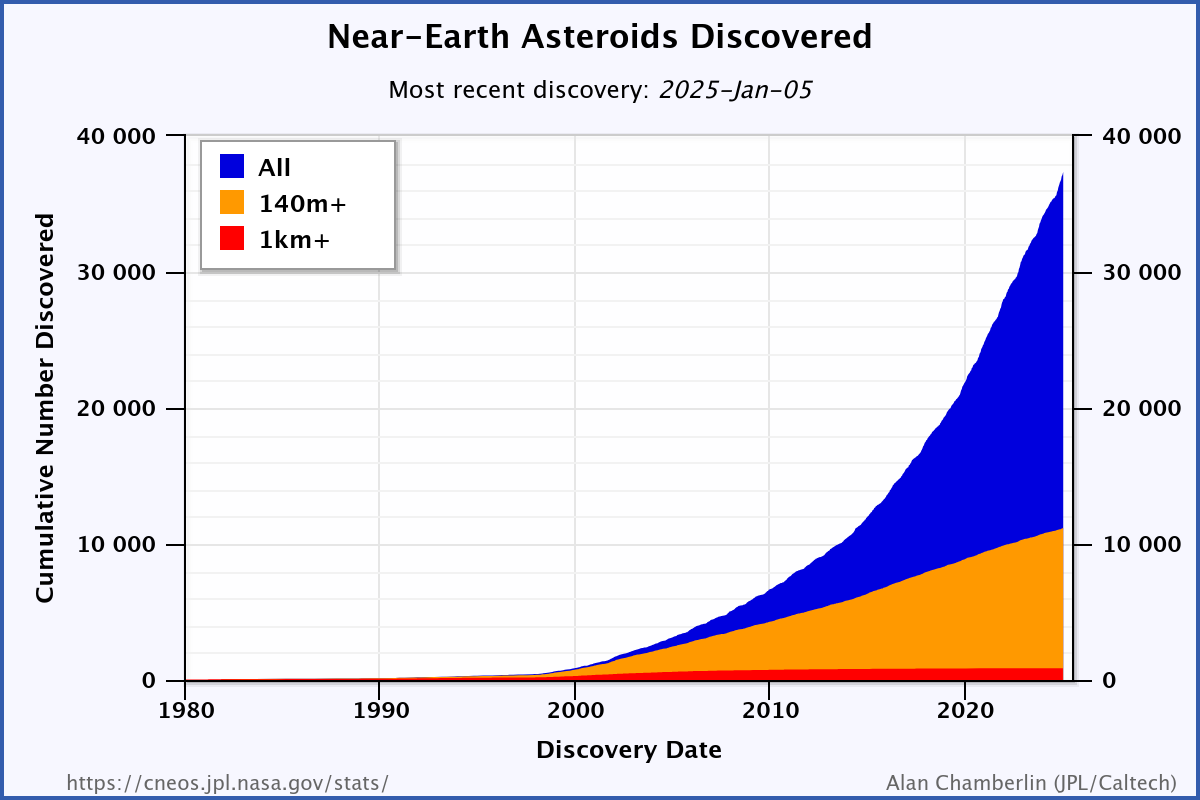A large asteroid is about to make its closest approach to Earth in 100 years. Over the coming days, it’s so close you should be able to observe it yourself with only the aid of binoculars.
Asteroid (887) Alinda was first discovered by German astronomer Max Wolf at Heidelberg Observatory on January 3, 1918. While asteroids can range in size from the truly giant Ceres – really a dwarf planet with a diameter of about 940 kilometers (585 miles) – to around 2 meters (6 feet) across, objects larger than 1 kilometer across make up a small percentage of the near-Earth asteroid population. With an estimated diameter of 4.2 kilometers, around Manhattan Island’s width, (887) Alinda is somewhat of a rarity – and a biggie.
As explained by the Virtual Telescope Project, the asteroid is one of the five largest asteroids to approach the Earth at a distance closer than 15 million kilometers (9.3 million miles) from now until the year 2200.

Asteroids larger than 1 kilometer are rare.
Image credit: Alan Chamberlin (JPL/Caltech)
While not deemed a potentially hazardous asteroid, as its orbit has been predicted to not set it on course with Earth, its eccentric orbit will still give us a few close encounters. On its closest approach in a hundred years, taking place today, the asteroid will be 0.08220 Astronomical Units (AU) away from Earth, with one AU being the distance between the Earth and the Sun.
While that may look fairly close – and it is in astronomical terms – that’s 12.3 million kilometers, or 32 times the average distance to the Moon. At this distance, the object will be pretty bright in the sky for the next 10 days. The Virtual Telescope will provide a live feed of the object, starting January 8, 2025, 20:30 UTC.
If you miss the livestream, there will be another on January 12, beginning at 17:30 UTC, when the object will peak in brightness. However, you should also be able to see the object with binoculars or a small telescope, especially in the Northern hemisphere, in the constellations of Orion and Gemini. An object this bright, large, and close only comes around once every decade.
After its close approach, 887 Alinda won’t make another close approach until January 25, 2087, when it will come within 0.16633 AU from Earth.
Source Link: Rare 4-Kilometer-Long Asteroid 887 Alinda Makes A Spectacular Close Approach To Earth